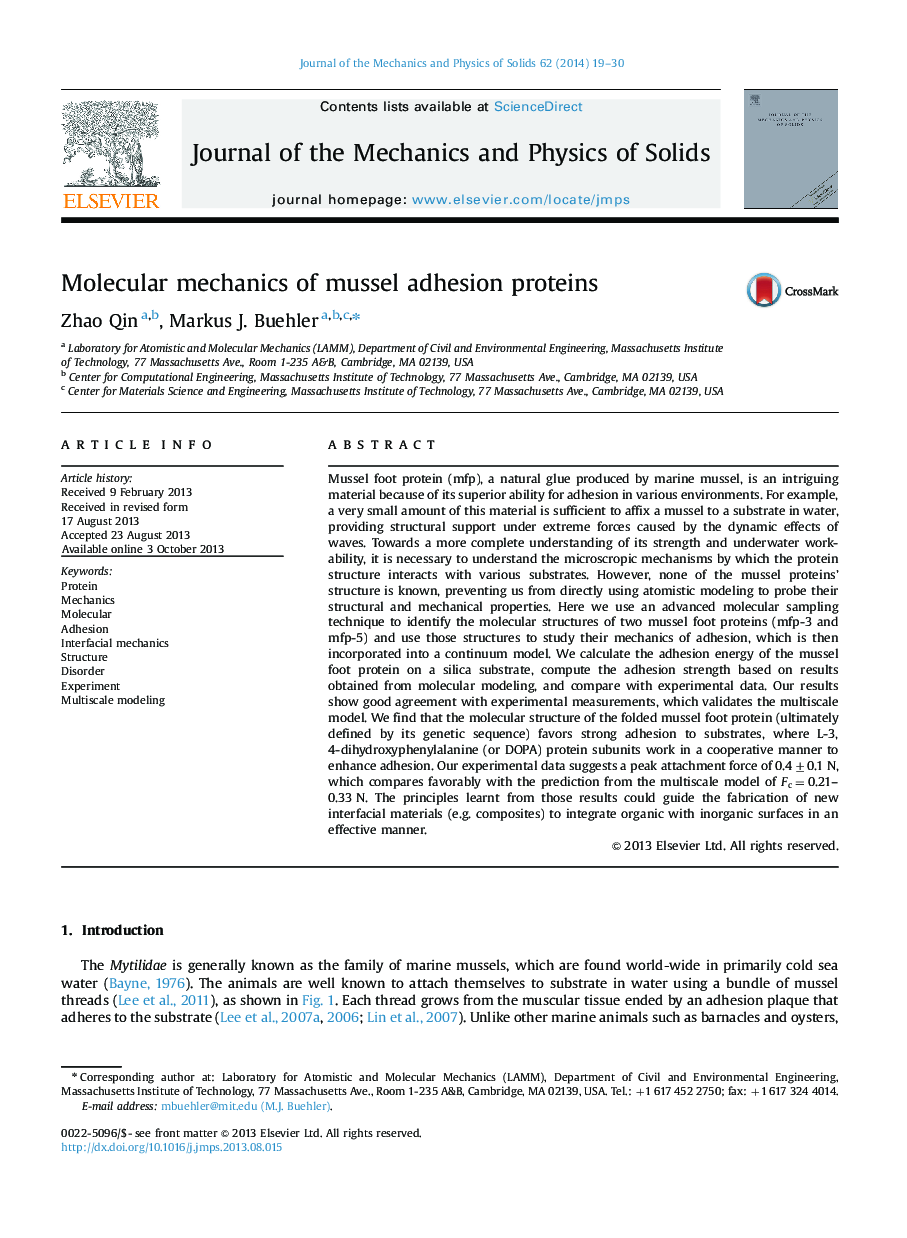| کد مقاله | کد نشریه | سال انتشار | مقاله انگلیسی | نسخه تمام متن |
|---|---|---|---|---|
| 796640 | 1467081 | 2014 | 12 صفحه PDF | دانلود رایگان |
Mussel foot protein (mfp), a natural glue produced by marine mussel, is an intriguing material because of its superior ability for adhesion in various environments. For example, a very small amount of this material is sufficient to affix a mussel to a substrate in water, providing structural support under extreme forces caused by the dynamic effects of waves. Towards a more complete understanding of its strength and underwater workability, it is necessary to understand the microscropic mechanisms by which the protein structure interacts with various substrates. However, none of the mussel proteins’ structure is known, preventing us from directly using atomistic modeling to probe their structural and mechanical properties. Here we use an advanced molecular sampling technique to identify the molecular structures of two mussel foot proteins (mfp-3 and mfp-5) and use those structures to study their mechanics of adhesion, which is then incorporated into a continuum model. We calculate the adhesion energy of the mussel foot protein on a silica substrate, compute the adhesion strength based on results obtained from molecular modeling, and compare with experimental data. Our results show good agreement with experimental measurements, which validates the multiscale model. We find that the molecular structure of the folded mussel foot protein (ultimately defined by its genetic sequence) favors strong adhesion to substrates, where L-3,4-dihydroxyphenylalanine (or DOPA) protein subunits work in a cooperative manner to enhance adhesion. Our experimental data suggests a peak attachment force of 0.4±0.1 N, which compares favorably with the prediction from the multiscale model of Fc=Fc=0.21–0.33 N. The principles learnt from those results could guide the fabrication of new interfacial materials (e.g. composites) to integrate organic with inorganic surfaces in an effective manner.
Journal: Journal of the Mechanics and Physics of Solids - Volume 62, January 2014, Pages 19–30
